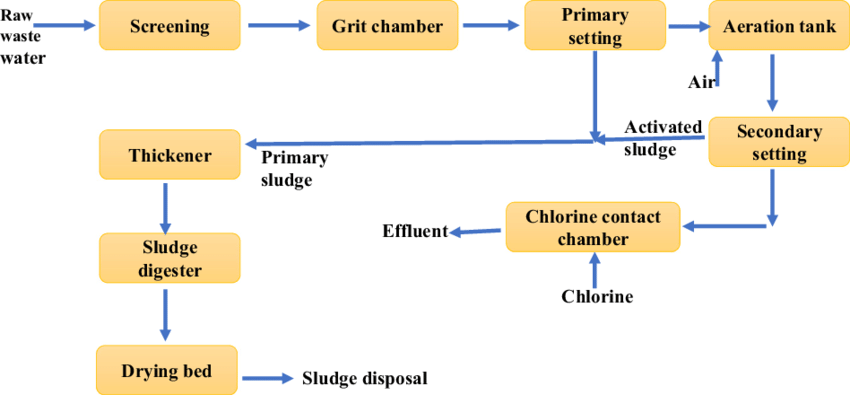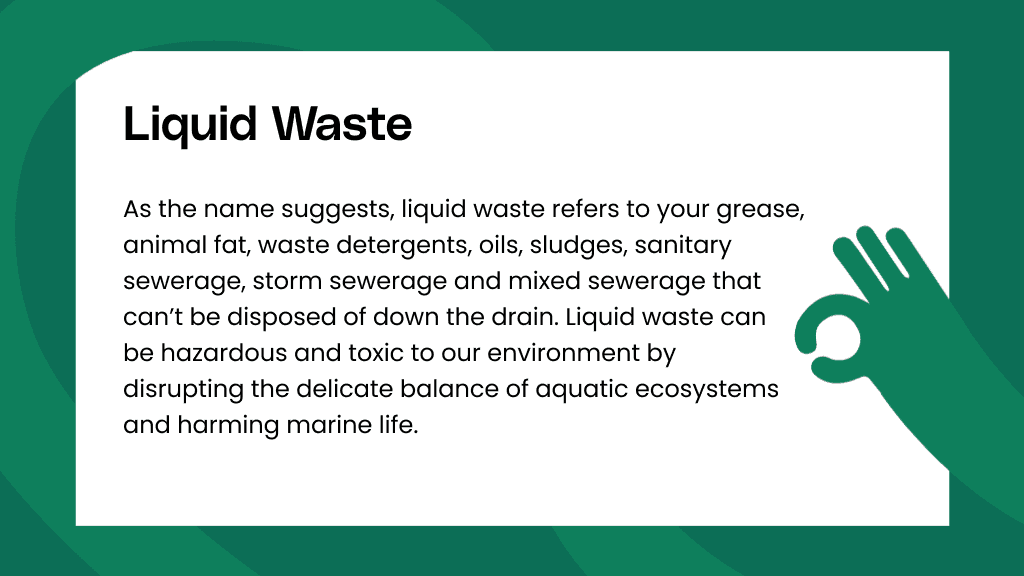The Ultimate Guide To Reclaim Waste
The Ultimate Guide To Reclaim Waste
Blog Article
Reclaim Waste for Beginners
Table of ContentsThe Main Principles Of Reclaim Waste Reclaim Waste Things To Know Before You Get ThisAbout Reclaim WasteNot known Facts About Reclaim WasteAbout Reclaim Waste
Domestic sewage waste refers to the waste and products from a residential septic tank. The correct administration and disposal of residential sewage waste require fluid waste to be transferred to a sewer treatment plant where the correct techniques and devices are applied to purify and dispose of waste.
Commercial waste commonly consists of prospective hazards, such as flammable materials or a blend of liquid and strong waste products, and calls for an advanced and detailed disposal process. The disposal of commercial waste generally includes the filtration of waste before transportation to make sure risk-free and proper disposal. Industrial waste is produced from results and drainage of industrial processes and manufacturing.
This kind of waste can not use the same sewage administration transportation or procedures as septic or commercial liquids. The industrial waste monitoring procedure requires the inspection and screening of fluid waste before it goes through the disposal process (liquid waste disposal). Drainage waste is the liquid waste that originates from runoff and excess stormwater in extremely populated areas or cities
Overflow waste can create contamination and flooding if not handled correctly. Making sure correct waste administration can protect against calamities and decrease environmental harm.
How Reclaim Waste can Save You Time, Stress, and Money.
Contact PROS Providers today to discover our waste monitoring and disposal solutions and the proper methods to look after the liquid waste you create.
(https://fliphtml5.com/homepage/kekhp)This supposed 'wastewater' is not only a vital source but, after treatment, will certainly be launched to our land, waterways or the sea. Made use of water from bathrooms, showers, bathrooms, cooking area sinks, laundries and commercial procedures is known as wastewater.

water utilized to cool equipment or tidy plant and tools). Stormwater, a form of wastewater, is drainage that streams from farming and urban locations such as roof coverings, parks, gardens, roads, paths and rain gutters right into stormwater drains, after rain. Stormwater moves unattended straight to neighborhood creeks or rivers, eventually getting to the ocean.
Reclaim Waste Fundamentals Explained
In Queensland, a lot of wastewater is treated at sewer therapy plants. Wastewater visit this page is transported from domestic or commercial sites via a system of sewage systems and pump terminals, known as sewage reticulation, to a sewage treatment plant.
The Division of Natural Resources advises city governments about managing, operating and keeping sewerage systems and treatment plants. In unsewered areas, regional governments might need owners to install individual or household sewer treatment systems to treat domestic wastewater from toilets, kitchen areas, bathrooms and laundries. The Department of Natural Resources authorises making use of household systems when they are shown to be effective.
Most stormwater receives no treatment. In some new neighborhoods, treatment of some stormwater to remove trash, sand and gravel has actually begun using gross pollutant traps. Wastewater treatment takes place in four phases: Removes strong matter. Bigger solids, such as plastics and other things wrongly released to sewers, are gotten rid of when wastewater is passed with screens.
Makes use of small living microorganisms recognizes as micro-organisms to break down and get rid of continuing to be liquified wastes and great fragments. Micro-organisms and wastes are integrated in the sludge.
The Buzz on Reclaim Waste
Nutrient elimination is not available at all sewer therapy plants due to the fact that it calls for expensive specialized tools. Clear liquid effluent generated after treatment might still contain disease-causing micro-organisms - liquid waste disposal melbourne.

This typically indicates wastewater needs to be dealt with or pollutants gotten rid of prior to it can be discharged to waterways. A lot of wastewater moves into the sewage system. Under the Act, neighborhood federal governments provide approvals and licences for ecologically appropriate tasks (ERAs) involving wastewater launches that might have a local impact. The division administers approvals and permits to Ages entailing wastewater releases that may have a regional or statewide influence.
Getting The Reclaim Waste To Work
Tracking supplies accurate details about water quality and can validate that permit problems are being satisfied. The information obtained via monitoring offers the basis for making water quality decisions.
Report this page